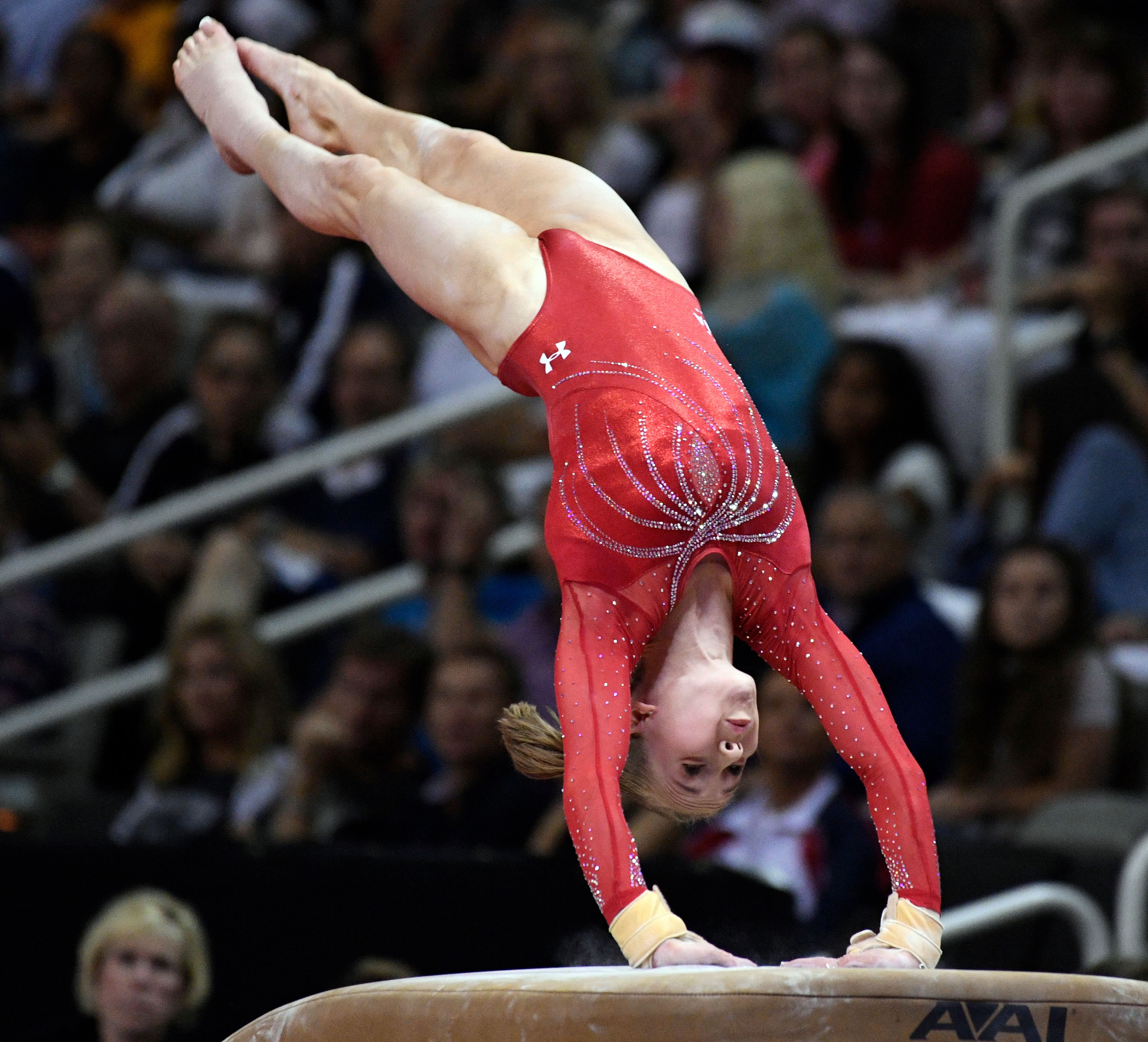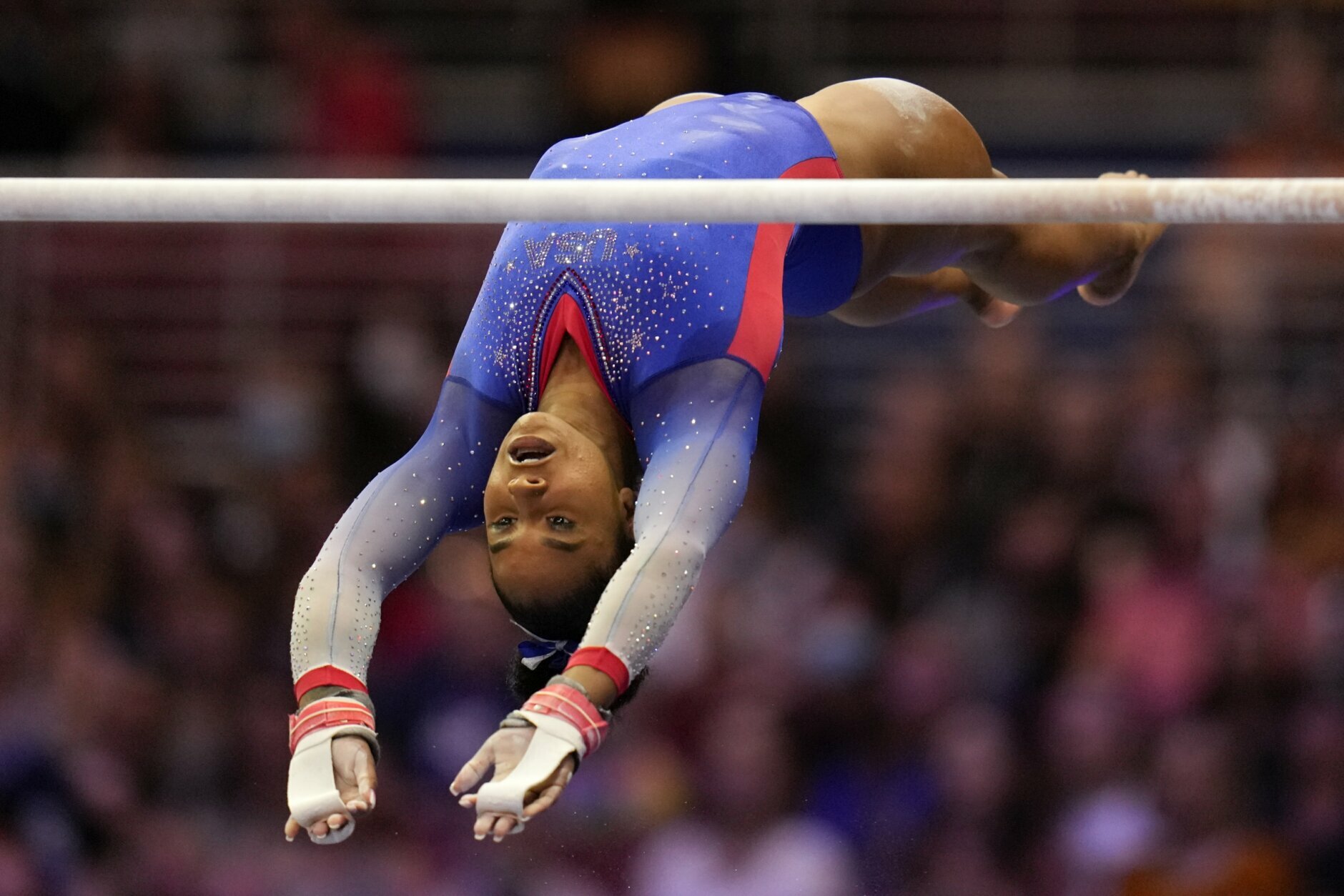Injury Types and Causes: Gymnastics Olympic Trials Injury

Gymnastics olympic trials injury – Gymnasts are prone to a wide range of injuries due to the high-impact and repetitive nature of their training and competition. These injuries can vary in severity, from minor sprains and strains to more serious fractures and dislocations.
The gymnastics Olympic trials are a grueling test of skill and endurance, and unfortunately, injuries are not uncommon. One of the most memorable moments from the 2021 trials was Kayla Dicello’s incredible vault, a gravity-defying feat that left the crowd in awe.
Despite her injury, Dicello’s determination and spirit were an inspiration to all who witnessed it, a testament to the resilience and perseverance of the human spirit. As the trials continue, we can only hope that the athletes stay healthy and injury-free, allowing them to showcase their incredible talents on the world’s biggest stage.
The most common injuries sustained during gymnastics Olympic trials include:
- Ankle sprains: These occur when the ankle is twisted or rolled, causing damage to the ligaments that support the joint.
- Knee injuries: These can include ligament tears, meniscus tears, and patellar tendinitis. They are often caused by landing from jumps or performing twisting movements.
- Shoulder injuries: These can include rotator cuff tears, labral tears, and impingement. They are often caused by overhead movements, such as handstands and cartwheels.
- Wrist injuries: These can include sprains, fractures, and carpal tunnel syndrome. They are often caused by landing on the hands or performing repetitive wrist movements.
- Back injuries: These can include strains, sprains, and herniated discs. They are often caused by lifting heavy weights or performing repetitive twisting movements.
The specific movements and techniques that contribute to these injuries vary depending on the sport and the individual athlete. However, some general factors that increase the risk of injury include:
- High-impact landings: Landing from jumps or other high-impact movements can put a lot of stress on the joints and ligaments, increasing the risk of sprains, strains, and fractures.
- Repetitive movements: Performing the same movements over and over again can lead to overuse injuries, such as tendinitis and carpal tunnel syndrome.
- Training intensity: The intensity of training can also increase the risk of injury. Athletes who train for long hours or at a high intensity are more likely to experience injuries.
- Competition pressure: The pressure to perform well in competition can lead to athletes pushing themselves too hard, which can increase the risk of injury.
Injury Prevention and Treatment

Injuries are an unfortunate part of gymnastics, but there are a number of effective strategies that gymnasts can use to prevent and treat them.
Proper warm-up, conditioning, and technique training are all essential for injury prevention. Warm-ups should include dynamic stretches that prepare the muscles for activity, while conditioning exercises help to strengthen the muscles and improve flexibility. Technique training should focus on proper form and body mechanics, which can help to reduce the risk of injuries.
Injury Treatment and Rehabilitation, Gymnastics olympic trials injury
When injuries do occur, it is important to seek prompt medical attention. Treatment options will vary depending on the severity of the injury, but may include rest, ice, compression, and elevation (RICE). In some cases, surgery may be necessary.
Rehabilitation is an important part of the recovery process from a gymnastics injury. Rehabilitation exercises help to restore range of motion, strength, and flexibility. It is important to follow the rehabilitation plan carefully and to gradually increase the intensity of the exercises as tolerated.
Case Studies
There are many case studies of successful injury recovery and return to competition in gymnastics. One example is gymnast Simone Biles, who suffered a torn ACL in 2018. After surgery and rehabilitation, Biles returned to competition and went on to win four gold medals at the 2020 Summer Olympics.
Impact on Performance and Career

Injuries can have a significant impact on gymnasts’ performance at the Olympic trials and beyond. A gymnast who is injured may not be able to train as hard or as consistently as they would like, which can lead to a decline in their performance. In addition, injuries can cause gymnasts to lose confidence in their abilities, which can further impact their performance.
The emotional and psychological challenges associated with injuries can also be significant. Gymnasts who are injured may feel frustrated, angry, and depressed. They may also worry about their future in the sport. These emotions can make it difficult for gymnasts to stay motivated and focused on their recovery.
Examples of Gymnasts Who Have Overcome Injuries
Despite the challenges, many gymnasts have been able to overcome injuries and achieve success. Here are a few examples:
- Simone Biles: Biles is one of the most successful gymnasts in history. She has won 32 Olympic and World Championship medals, including four Olympic gold medals. Biles has overcome several injuries throughout her career, including a torn ACL in 2018. Despite these injuries, Biles has continued to compete at the highest level.
- Aly Raisman: Raisman is another highly successful gymnast. She has won six Olympic medals, including two gold medals. Raisman has also overcome several injuries throughout her career, including a broken wrist in 2016. Despite these injuries, Raisman has continued to compete at the highest level.
- Shawn Johnson: Johnson is a former Olympic gold medalist. She won the all-around gold medal at the 2008 Beijing Olympics. Johnson has also overcome several injuries throughout her career, including a torn ACL in 2010. Despite these injuries, Johnson was able to return to competition and win a silver medal at the 2012 London Olympics.
In the fierce pursuit of Olympic glory, gymnasts push their bodies to the limit, sometimes leading to injuries that can derail their dreams. The gymnastics Olympic trials are a grueling competition where athletes showcase their skills, but also face the risk of setbacks.
Among the contenders, the women’s gymnastics Olympic trials are particularly demanding, with gymnasts performing intricate routines that require immense strength and flexibility. While injuries can occur in any event, certain elements like the vault and uneven bars are known to pose greater risks.
Understanding the potential for injuries is crucial for gymnasts and coaches to prepare and mitigate these risks, ensuring that athletes can reach their full potential on the biggest stage.